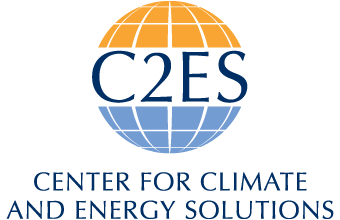Critical minerals are a hot topic in energy this year. As the United States focuses on “energy dominance,” C2ES has shifted our focus on two key areas of strategic concern: securing a domestic supply of raw materials and the building out the processing capacity to turn those minerals into inputs for batteries and other advanced energy technologies. In May 2025, our Regional Clean Economies program convened more than 50 leaders of business, government, academia, and communities from across the southeast United States in Knoxville, Tennessee, to explore opportunities to accelerate the development of a critical battery materials supply chain in the region.
Why critical materials, and why now?
As the adoption of grid-scale energy storage and electric vehicles grows around the world, the global appetite for batteries is growing faster than we can keep up with it. This has companies scrambling to source not just batteries, but the valuable materials inside, like lithium, graphite, cobalt, and manganese. The demand for the critical components used to produce these technologies is expected to grow by as much as six times from 2020–40.
The supply chains for batteries are sprawling, complex, and geographically concentrated. In order to build a battery for an electric vehicle assembled in the United States, the materials in that battery may travel more than 50,000 miles from extraction to cell production. As the Covid-19 pandemic showed, and the recent tariff announcements exemplified, sudden shocks to supply chains can throw sand in the gears of any industry that relies on globally dispersed inputs, and the battery industry is no exception.
Incentivized by federal manufacturing and electric vehicle tax credits, battery companies in North America are looking build a more resilient supply chain for critical materials that can capitalize on the domestic content requirements of these tax credits.
The road to battery dominance runs through the Southeast
The Southeast United States is part of the emerging “Battery Belt,” a hub of new investments in battery, electric vehicle, and components production stretching from Michigan to Alabama spurred in large part by federal clean energy and manufacturing tax credits. Since the passage of the credits in 2022, more than $82 billion has been invested in manufacturing related to batteries and critical minerals nationally, with more than $37 billion of this investment across just five states in the Southeast: Tennessee, Georgia, North Carolina, South Carolina, and Alabama.
These states are home to world-class research universities and national labs, leading automotive and manufacturing facilities, a ready industrial base with wide-reaching transportation corridors and available, and low-cost electricity. Participants in our Knoxville roundtable were excited about the opportunity for the region to become a hub for battery and critical materials production. They pointed to the strong assets of the region that make it a good candidate for global leadership.
Regional collaboration, not competition, is the way forward.
Participants across the sectors and states agreed that the region is well-positioned to take advantage of the opportunity to develop the full battery materials value chain, and highlighted the need for intentional regional collaboration to build on each states’ strengths. They proposed regional efforts to:
- build a shared regional framework for community engagement tailored to the battery supply chain
- develop a regional innovation engine to promote access to capital for emerging companies in the battery supply chain
- create a research and development consortium across the value chain that includes industry
- develop a collaborative model for state government and companies to meet the needs of workers across the region
- create an educational campaign aimed at state and federal policymakers to dispel misconceptions about the battery and critical material industry.
Federal policy and market certainty are foundational.
As Congress considers the future of the federal tax credits, and the administration weighs the future of promised grant funds from agencies like the Department of Energy and the Environmental Protection Agency, roundtable participants agreed unanimously that continued federal investment is crucial to the development of this industry. They pointed to companies that have announced billions of dollars of new investments in the region—and the thousands of jobs that go along with them. Without longer-term certainty that these federal incentives will continue into the future, companies may pull back their investments, causing communities across the region to lose out on the billions of dollars and thousands of jobs these facilities would bring. Further, building domestic markets for end-use products that utilize these materials is critical to attract further investment. Companies are far less likely to manufacture products here only to incur transportation and logistics costs associated with their export. As such, tax incentives must bolster American demand and promote American production of these goods, otherwise our rivals abroad will dominate the supply chain and the market.
The road ahead
We left the conversation in Knoxville inspired to take this effort forward into a regional roadmap that can promote the development of the critical battery materials supply chain while uplifting local communities. We’ll share takeaways from the conversation and our plans for future events across the region soon. In the meantime, let us know if you’d like to get involved.
